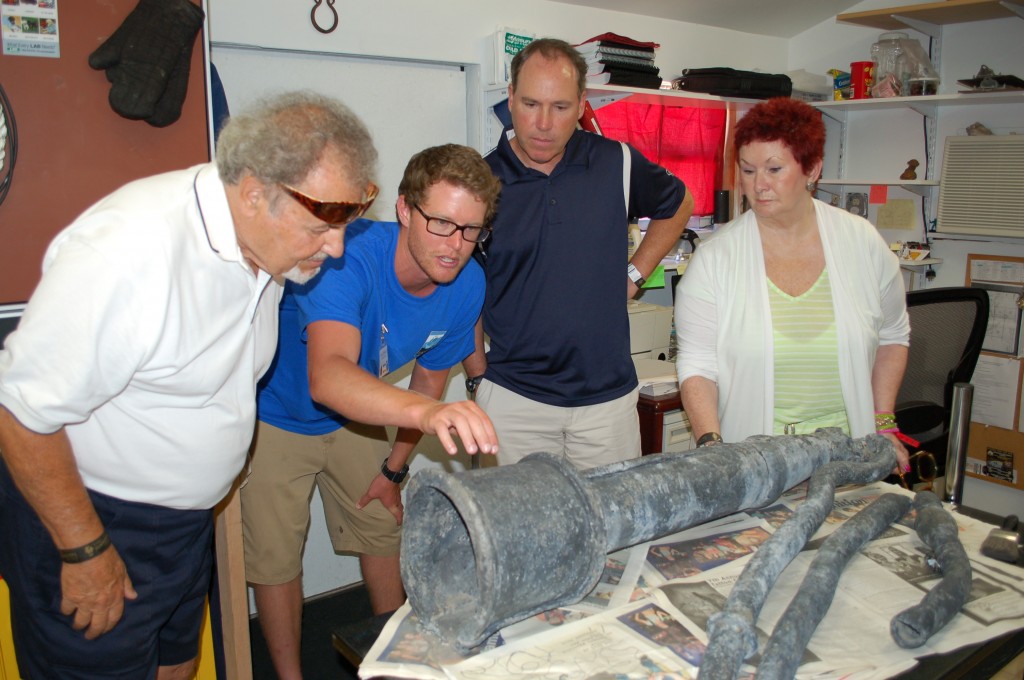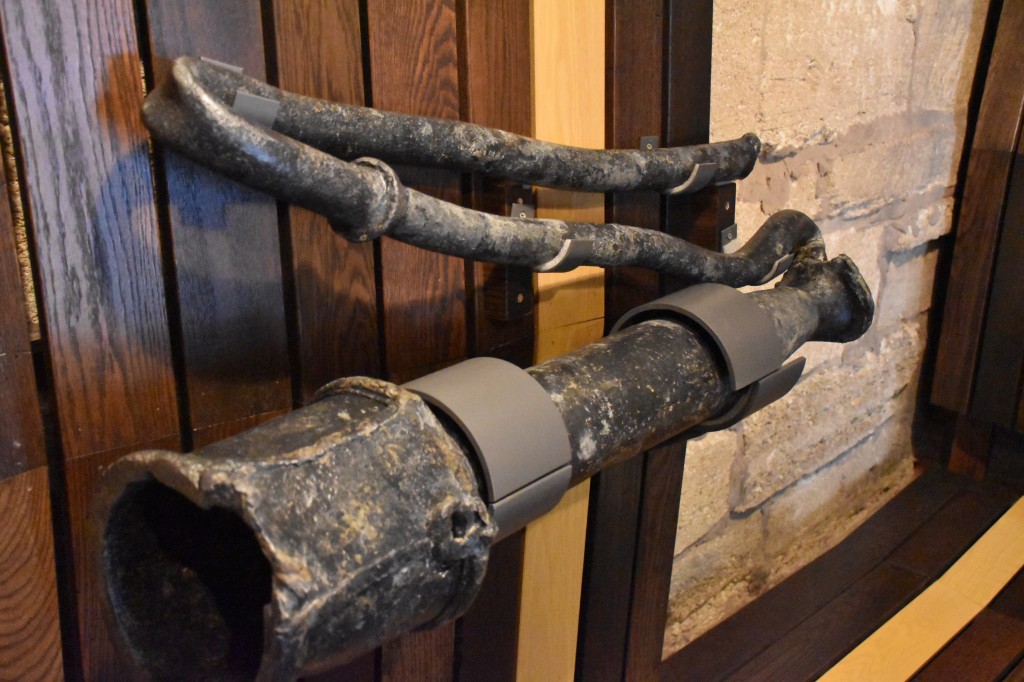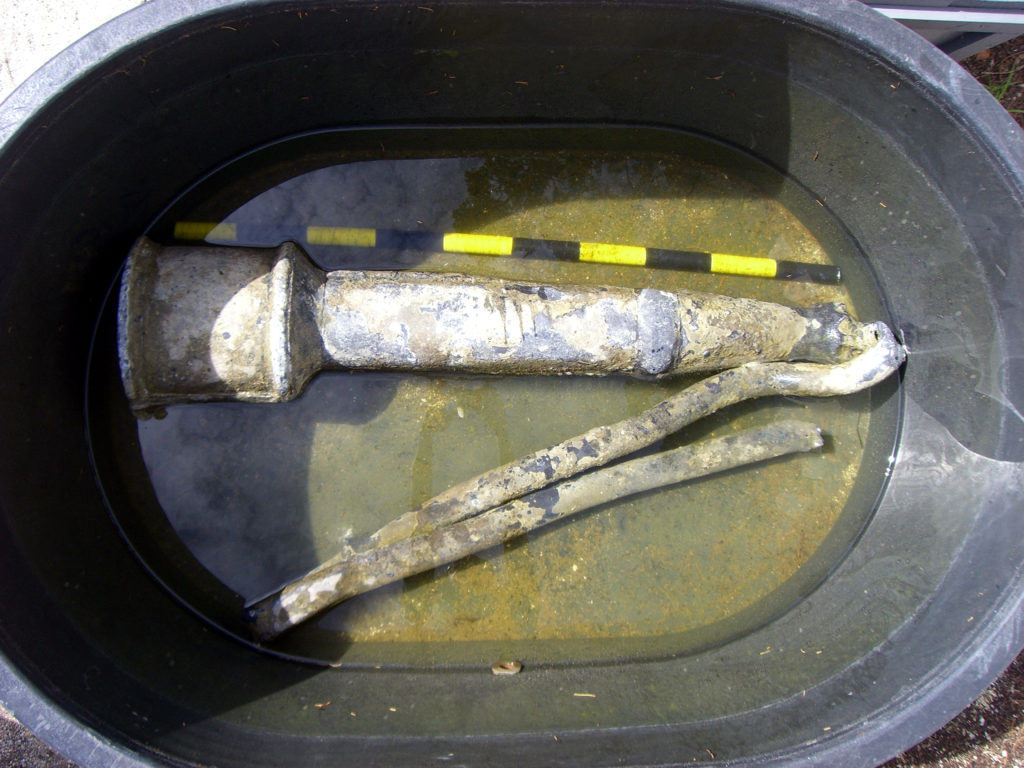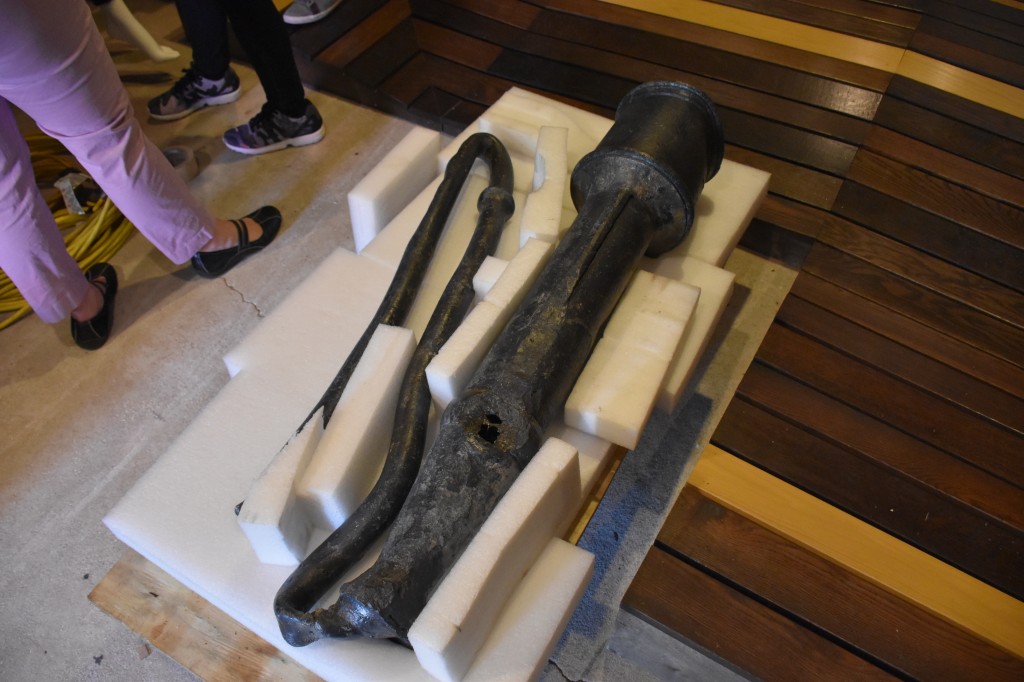During the 2011 field season, a large artifact was uncovered just north of the various cannons found on a 1782 British Loyalist shipwreck in St. Augustine. While originally unsure of what the object was, the Lighthouse Archaeological Maritime Program (LAMP) dive team was certain of a few things; it was big, heavy and made of lead. It was also unique to the other artifacts on the site and the decision was made to excavate and bring it to the Lighthouse.
The lead artifact featured a large, cylindrical, funnel-like body roughly one foot in diameter at its widest, tapering to a pipe nearly two inches in diameter. It was found bent and twisted in on itself, but if stretched out to its original form, the remaining length would have measured almost 10 feet long. Overall, the lead weighs nearly 300 pounds.
The form of the artifact first led the Lighthouse archaeologists to believe it was the ship’s pissdale or head; essentially a urinal or early form of toilet for the crew. After additional research and comparison, the team concluded it was a deck pump. Rather than removing waste from the ship, it was used to pump water from the ocean up to the deck in order to clean the vessel or fill casks and barrels.
After beginning conservation on the deck pump, several marks could be seen on the lead. There is a small number “2” near the top of the pump head, along with several other barely visible graffiti or scratches from wear and tear. The other marks, though, are of great interest. There are several spots where it is clearly evident the lead was cut into by an axe, cutlass or other large cutting tool. This is significant because it supports the current hypothesis of what happened when the ship wrecked.

Field school student Matt Hanks showcases the conservation underway on the deck pump with guests during a tour.
The vessel was a British refugee shipwreck that grounded off St. Augustine. It was part of the evacuation fleet of Charleston, S.C., was responsible for transporting the Loyalist population and their goods necessary to begin life again in East Florida. They arrived 31 December 1782, only to run aground on a hidden sandbar near the inlet. The passengers abandoned and were taken safely ashore, while efforts were taken to save the ship. In order to lighten the load and pull the keel off the sandbar, heavy objects were jettisoned overboard. This included the pile of cannons and the large lead deck pump. The cut marks appear to show the last-ditch attempt to hack and pry the pump from out of the wood of the ship.
Because the artifact shows such a pivotal moment of the ship’s voyage, it was carefully worked on by Director of Archaeological Conservation Starr Cox. While lead is a relatively easy material to conserve, the sheer size and weight of the pump proved to be a challenge. Starr was able to remove the various sections of concretion from both the outside and interior surfaces before coating and sealing the lead to stabilize the pump for long-term exposure.
After finishing the conservation of the pump, one final hurdle remained. Because the artifact vividly shows evidence of the wrecking process, it was a critical part of the new Wrecked! exhibit.
However, because it is a near 300-pound, fragile piece of history, the mounting and exhibition of the pump would be trouble. A special display section was designed and built for the deck pump by the Wrecked! fabricators. Getting the pump into place, though, was achieved by three Lighthouse employees (including myself) very carefully lifting and lowering the artifact onto mounting brackets.

Over 200 years after it was thrown overboard, the pump is now restored and in its permanent resting place in the new Wrecked! exhibition.
The most difficult aspect was making sure the smaller, bent section of the lead tubing did not move any further out of place and risk snapping off. Fortunately, the pump did not budge and will now be safely and securely out for the visiting public to enjoy and learn about this Revolutionary War-era shipwreck.
Andrew Thomson is the Assistant Conservator for the St. Augustine Lighthouse & Maritime Museum. He received his graduate degree and training from the Conservation Research Laboratory at Texas A&M.



